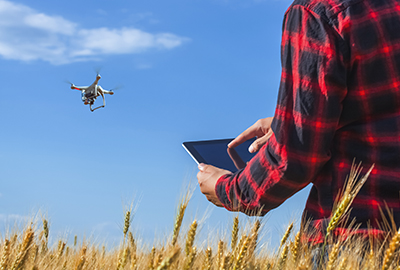 Keeping a farm in a thriving state has never been an easy task. But in recent years, the agricultural industry has only seen its struggles grow. Problems like the labor shortage, supply chain issues, and the growing demand for food have put more pressure on the world’s farmers. Now farmers are using machine vision to boost crop quality and quantity.
Keeping a farm in a thriving state has never been an easy task. But in recent years, the agricultural industry has only seen its struggles grow. Problems like the labor shortage, supply chain issues, and the growing demand for food have put more pressure on the world’s farmers. Now farmers are using machine vision to boost crop quality and quantity.
Machine Vision Keeps a Vigilant Eye on Crops
Managing a farm has always been labor-intensive work. Whether dealing with drought, disease, or equipment failures, there is always a new challenge popping up for an agricultural worker. In the past, a farm required a lot of manual inspection to check on soil and crop health. Smart agriculture has incorporated sensors to help track environmental conditions and growth.
Some of the gaps left between these sensors and manual inspection can be filled in with machine vision. And in many cases, machine vision can help farmers do a better job of watching their crops. Artificial intelligence can be trained to identify pests, look for water stress in plants, and even find evidence of disease in its earliest stages.
Machine vision systems can also make use of multispectral imaging by employing wavelengths ranging from X-ray to infrared. Processing images captured outside the visible light spectrum can help farmers to learn about threats to crops that can’t easily be seen with the naked eye. Whether it’s disease, pests, parasites, or environmental issues, machine vision is finding the problem fast and with high accuracy.
Growing Higher Quality Crops with Machine Vision
Deploying a machine vision system doesn’t just make a farmer’s life easier. It helps farms grow higher quality crops and boost their quality. How is machine vision helping crops to thrive? Here are a few ways machine vision boosts quality and quantity for farmers.
- Drone Images. A single drone can cover tens of thousands of acres each day and produce images sharp enough to count the insects on a single leaf. Crop health issues can be identified quickly. Harvests can be scheduled at just the right time when fruits and vegetables are at their peak so they arrive to consumers at their best.
- Weed Detection. Weeds compete with crops for nutrients, water, and sunlight. Even a seemingly minor invasion can lead to a loss of crop yield and quality. Farmers know the herbicides used to control weed populations not only cost money but can affect their crops as well. Machine vision can identify the types of weeds, the herbicides required to control them, and then even monitor the herbicide’s impact.
- Finding Insects and Disease. Consumers are pickier than ever when it comes to the appearance of their food. Pests and diseases can leave fruits and vegetables puny, spotted, and pale. Machine vision helps farmers identify invasive pests so they can be dealt with swiftly before affecting crops. Scouting can continue 24/7. Drones and autonomous vehicles never get tired of looking for pests and diseases.
Need a camera for your agricultural or industrial business? Browse the Phase 1 catalog to find the best camera for your next machine vision project.
